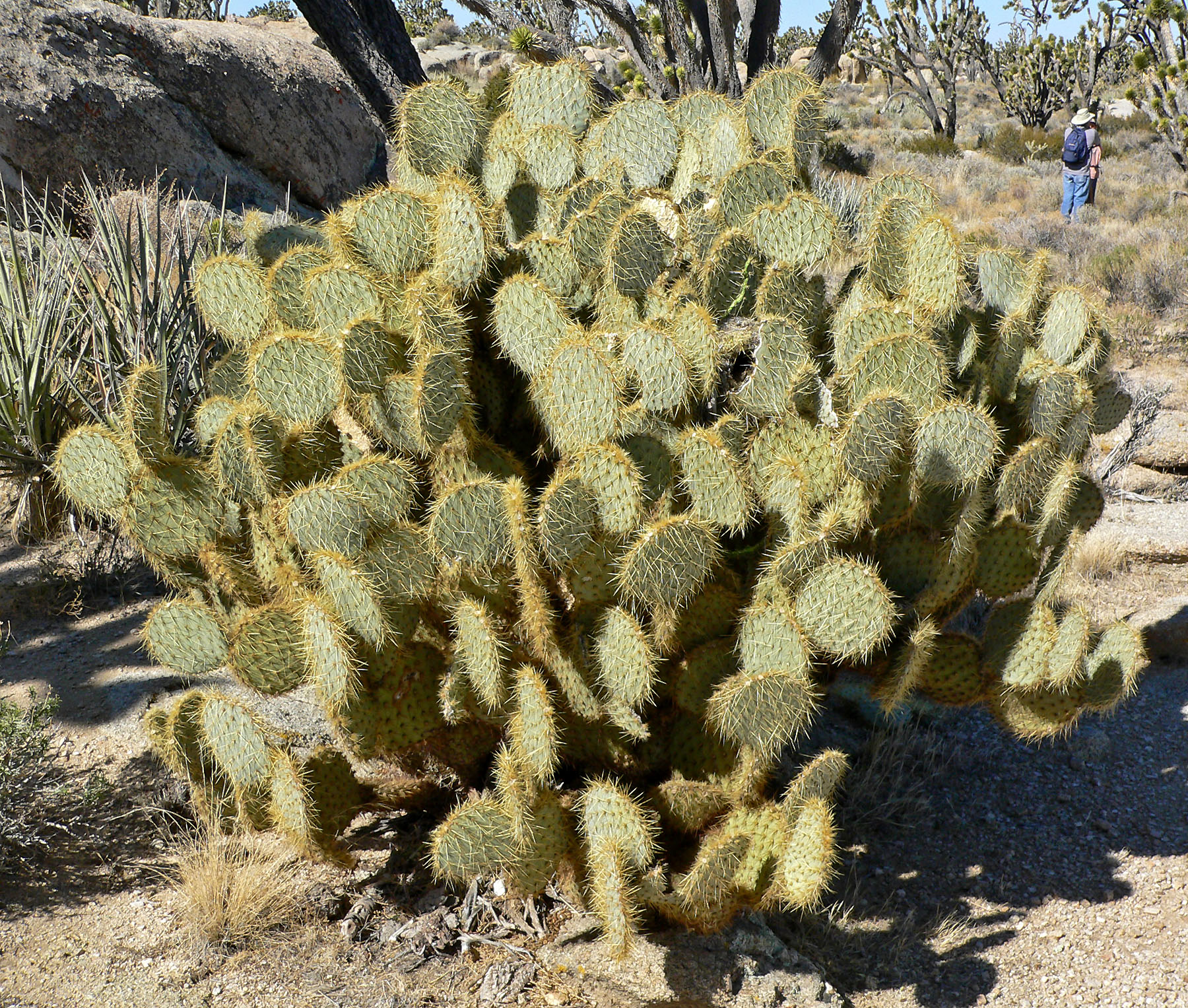Prickly Pear Cactus (Opuntia chlorotica)
Classification

Domain: Eukarya
This domain means that the organism has a true nucleus which contains chromosomes. This nucleus is bound by a nuclear membrane. It also contains membrane-bound organelles.
Kingdom: Plantae
The Kingdom of Plantae is made up of multicellular organisms that use photosynthesis to acquire nutrients.
Phylum: Angiospermophyta
This phylum is comprised of plants that produce seeds, but unlike gymnosperms these are covered by a fruit. These plants also have a flower for the reproductive organs, and they have an endosperm within the seed.
Class: Magnoliopsida
The Class of Magnoliopsida is made up of plants that create an sead with paired cotyledons and net-veined leaves.
Order: Caryophyllale
Characteristics of the Caryophyllales order is that the the developing seeds are not connected to the ovary wall by partitions. They are instead attached to the floor or to a central pillar. This is because of the free central arrangement and attachment of ovules within the ovary.
Family: Cactacea
The characteristics of the family of Cactaceae are areoles and flowers with mulilobed stigma, many sepals and petals, and many stamens.
Genus: Opuntia
In this Genus, Cacti stems grow in connected segments. They also have undeveloped leaves present on new joints. While many other cacti have black seed, Opuntia have a pale covering called aril.
Species: Opuntia chlorotica
Many of the characteristics of Opuntia chlorotica are also seen in other species in the genus Opuntia. However, Opuntia chlorotica can be easily distinguished by the combinations of certain characteristics. These include standing erect, oval pads, a distinct trunk, numerous pad spines that are yellow in color, and a blue-green rather than a purple color.